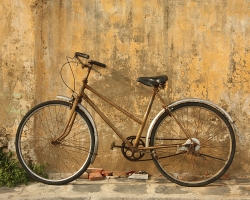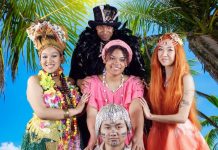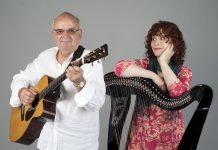Sunday, April 15, 10 miles of city streets around downtown Los Angeles will transform into a bicycle and pedestrian haven, as CicLAvia returns to the Southland for the fourth time. This event, which closes select city streets to automobile traffic, has drawn in excess of 100,000 people in each of its previous three incarnations. If you’ve got any uncertainty that people in Los Angeles are enthusiastic about bicycling—as well as roller skating, skateboarding, riding scooters, and other active forms of transportation—CicLAvia will erase any doubt.
With cars out of the picture, the streets are safe for people to walk, run, skate, ride, and play; it basically turns a large chunk of downtown Los Angeles into one big public park. CicLAvia is family-friendly—my kids love it—and there are lots of activities along the route, from kickball games to participatory chalk-art to all the typical shops and restaurants. Imagine having access to all the downtown amenities, but without the stress, noise, and pollution of automobile traffic. Imagine starting around MacArthur Park, where the kids can play and partake in creative events that spring up around CicLAvia. Cruise downtown for brunch curbside in one of many excellent restaurants, after which you can park the bikes and take a short walk (off the main CicLAvia route) over to the LA Cathedral, Disney Concert Hall, or Museum of Contemporary Art. End the day with short ride over to Little Tokyo for another snack or early dinner— the perfect city day.
Ultimately, however, CicLAvia is a festival; the City is not going to permanently prohibit cars on major thoroughfares or freeways to allow for unrestricted bicycle commuting around the city. Nevertheless, CicLAvia and related events do help to raise the profile of bicycling in the city, not just as a fun weekend activity or pastime for school-age children, but also as a valid form of primary transportation. What we need to do is to take the lessons of CicLAvia—that biking is fun, healthy, inexpensive, and practical—and apply them to the workaday landscape of Los Angeles. It is possible to have fun, safe, vibrant communities that are not organized solely around catering to automobiles.
In a nation where well over one-third of adults struggle with obesity and children suffer from lack of public open space in which to play, increased bicycle traffic is a very good thing. Culver City’s Bicycle and Pedestrian Master Plan and Los Angeles’ ambitious Bike Plan are steps in the right direction, but transforming Los Angeles from an “automobile culture” to a “walking, bicycling, bus-riding, train-riding, car-driving-only-when-necessary culture” will take a concerted effort. However, it’s an effort that starts with appreciating the possibilities and realizing the benefits—and CicLAvia is a window into one possible future.
You can find more information at www.ciclavia.org. Your friendly neighborhood Culver City Bicycle Coalition (www.ccbike.org) is planning a group ride from Culver City to CicLAvia in conjunction with the Bikerowave co-op (www.bikerowave.org); although families with children will probably want to drive downtown and park, if you are interested in bicycling downtown, meet us at Media Park (Venice and Culver Blvd.) at 8:45am. RSVP on the CCBC website. After you’ve experienced the city on a bike, you’ll be eager to discover ways to incorporate bicycling into your life and the life of your community.













